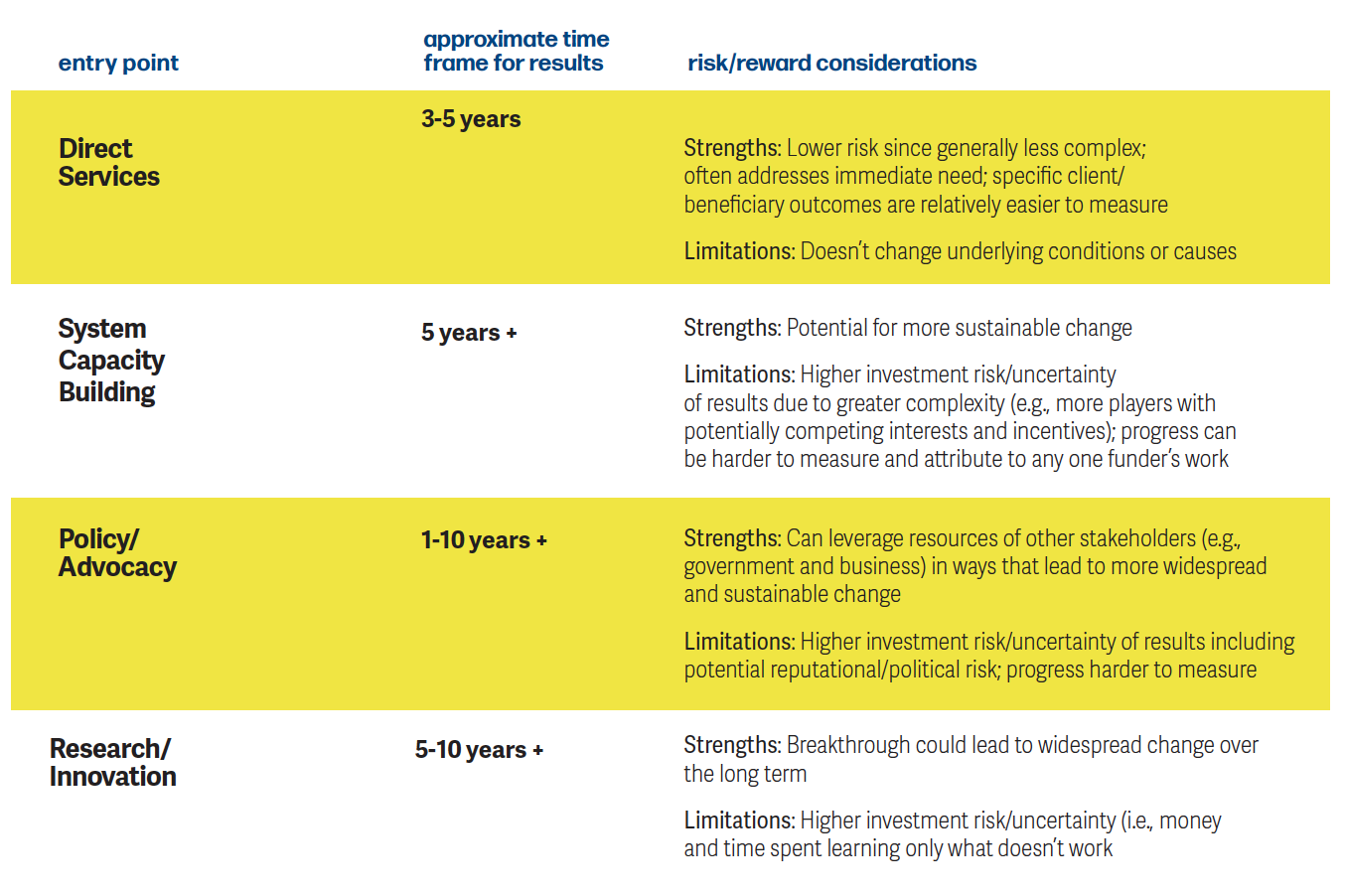Philanthropic support takes many forms. It can fund nonprofit programs that provide direct services to those in need; increase the capacity of systems so that programs can function more effectively and efficiently; fund research that underpins these programs; and support policy initiatives that are needed to sustain them. It can also back innovation with the potential for gamechanging progress.

Many organizations employ several plays. For example, FreeFrom provides direct service to survivors of intimate partner violence and also advocates for changes in laws to protect them. Leading Men Fellowship enhances preschool learning through direct service, in addition to increasing educational capacity by recruiting and training teachers. CCD India’s DEWATS uses innovative technology to provide wastewater treatment to previously neglected communities, serving as a model for potential government support.
Across the many social impact areas our team has analyzed, we find that philanthropic support typically falls within one of four categories, or philanthropic plays. While each is an equally valid choice for creating social impact, each brings different levels of risk, time horizons, and potential for scale. Participants in our High Impact Philanthropy Academy have found the table above. useful in recognizing the tradeoffs in these choices. Nonprofits have also found these guidelines helpful in prioritizing activities and managing funder expectations.
